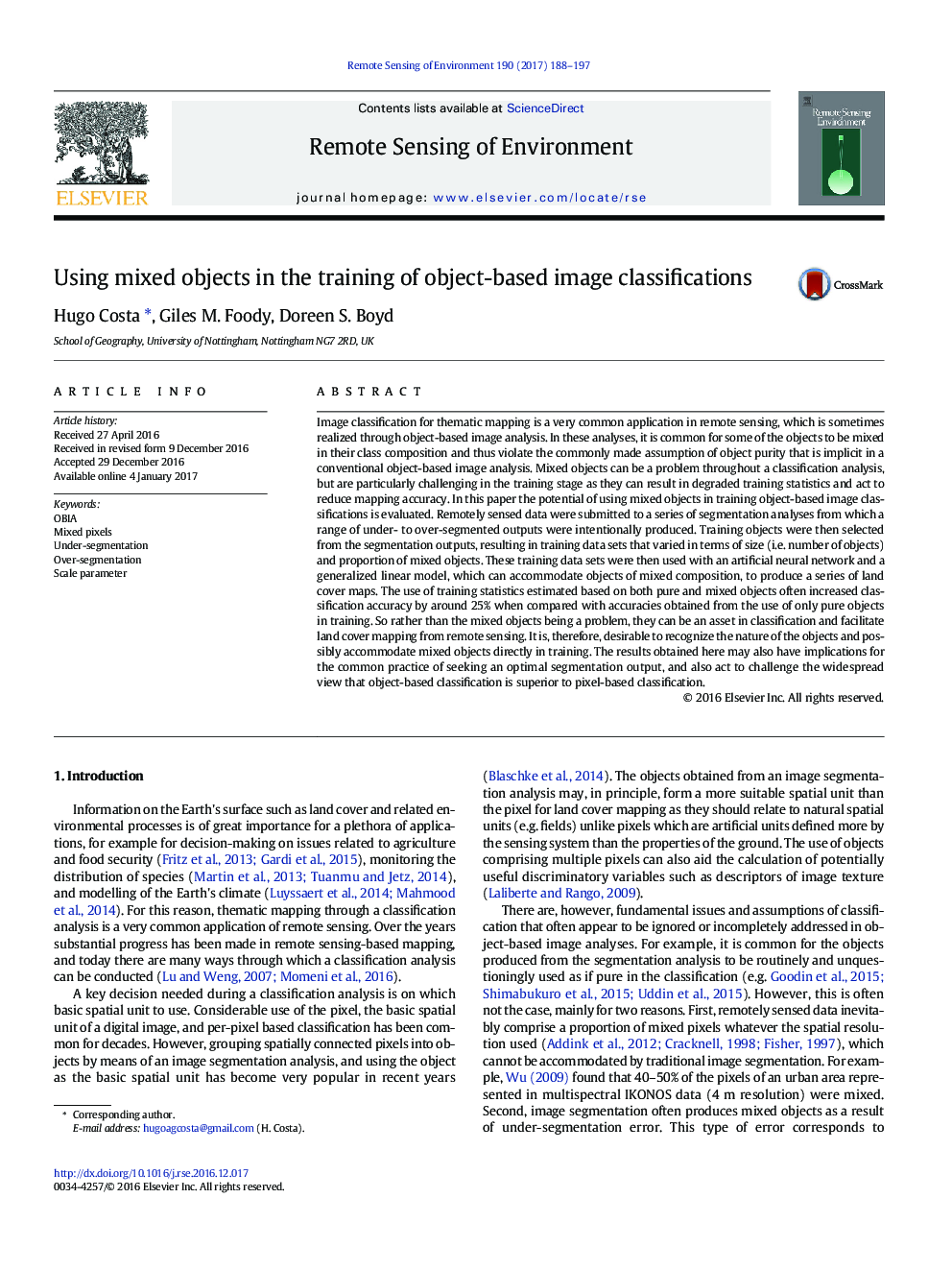| کد مقاله | کد نشریه | سال انتشار | مقاله انگلیسی | نسخه تمام متن |
|---|---|---|---|---|
| 5754782 | 1621210 | 2017 | 10 صفحه PDF | دانلود رایگان |
- Using mixed objects in training object-based image classifications is proposed.
- Using mixed objects often increased classification accuracy by around 25%.
- Using mixed objects was beneficial even when the training data sets were small.
- Classification accuracy was positively related to over-segmentation.
Image classification for thematic mapping is a very common application in remote sensing, which is sometimes realized through object-based image analysis. In these analyses, it is common for some of the objects to be mixed in their class composition and thus violate the commonly made assumption of object purity that is implicit in a conventional object-based image analysis. Mixed objects can be a problem throughout a classification analysis, but are particularly challenging in the training stage as they can result in degraded training statistics and act to reduce mapping accuracy. In this paper the potential of using mixed objects in training object-based image classifications is evaluated. Remotely sensed data were submitted to a series of segmentation analyses from which a range of under- to over-segmented outputs were intentionally produced. Training objects were then selected from the segmentation outputs, resulting in training data sets that varied in terms of size (i.e. number of objects) and proportion of mixed objects. These training data sets were then used with an artificial neural network and a generalized linear model, which can accommodate objects of mixed composition, to produce a series of land cover maps. The use of training statistics estimated based on both pure and mixed objects often increased classification accuracy by around 25% when compared with accuracies obtained from the use of only pure objects in training. So rather than the mixed objects being a problem, they can be an asset in classification and facilitate land cover mapping from remote sensing. It is, therefore, desirable to recognize the nature of the objects and possibly accommodate mixed objects directly in training. The results obtained here may also have implications for the common practice of seeking an optimal segmentation output, and also act to challenge the widespread view that object-based classification is superior to pixel-based classification.
Journal: Remote Sensing of Environment - Volume 190, 1 March 2017, Pages 188-197
